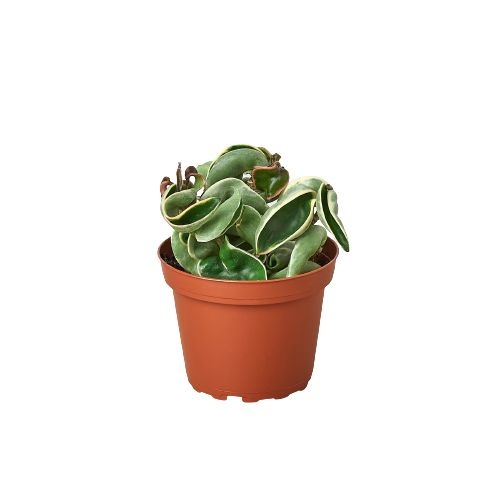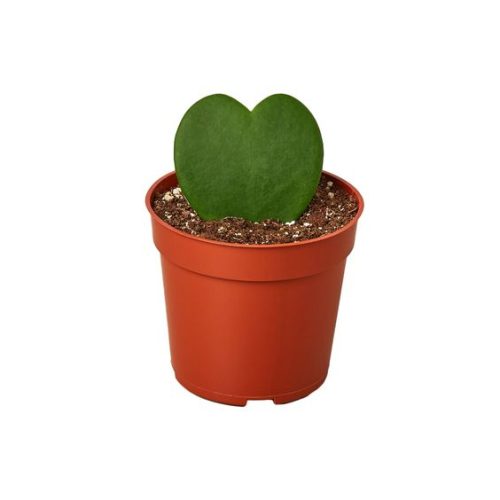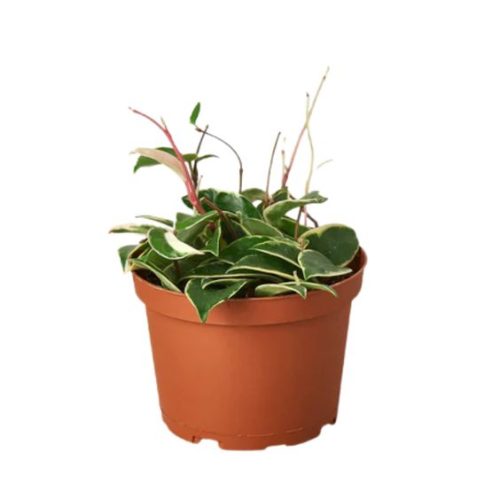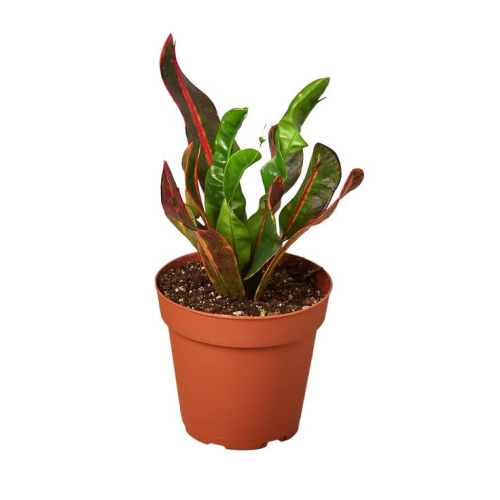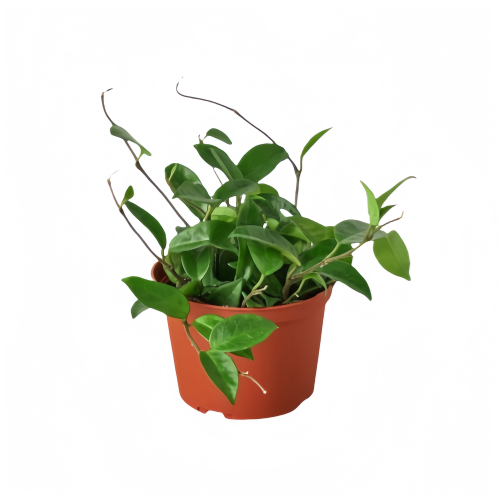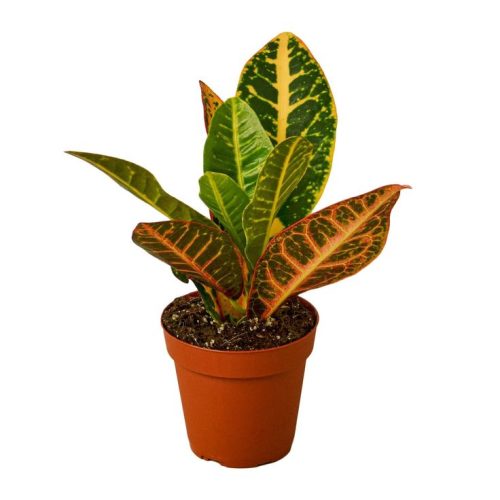Hoya Krimson Queen
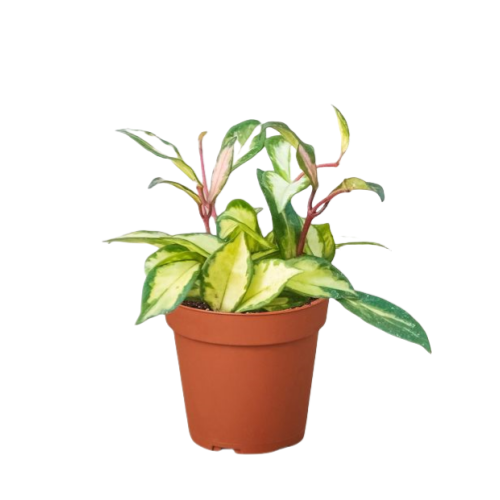
- Botanical Name: HOYA CARTOsa 'Krimson Queen
- Family Name: Apocynacea
- Ị ga: 3-6 Feet
- Okpomoku: 5℃~33℃
- Others: Tropical, indirect light, humidity.
Nlebazi anya
Nkọwa nke ngwaahịa
Royal Chọrọ mma: Akwụkwọ ntuziaka kachasị na Hoya Krimson Queen
Nwa nwoke mara mma Hoya Krimson
Origin and Distribution: Hoya Krimson Queen’s Homeland
Hoya Krimson Queen, also known as Hoya carnosa ‘Krimson Queen’ or Hoya tricolor, is a perennial evergreen climbing plant belonging to the Apocynaceae family and the Hoya genus. This plant hails from the humid subtropical climate regions of Asia and Australia, including the Philippines, Thailand, Malaysia, Bangladesh, India, Indonesia, and Polynesia. The warm climate and moist environment of these areas provide ideal conditions for the growth of Hoya Krimson Queen.
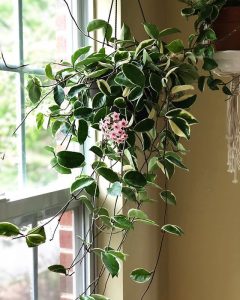
Hoya Krimson Queen
Nchọgharị Morphological: Akwụkwọ ndị na-atọ ụtọ na ifuru
Hoya Krimson Queen is renowned for its unique tricolored, thick, and waxy leaves, which typically display a mix of pink, creamy white, and green. New leaves emerge in a vibrant pink hue, gradually developing white or creamy spots as they mature. Some leaves may turn entirely white, while most have green centers with white or pink edges. The plant’s smooth vines can extend up to 5 to 6.5 feet (approximately 1.5 to 2 meters) in length, often in shades of green or pink. The star-shaped, waxy flowers of Hoya Krimson Queen A na-ewu ewu maka usoro okirikiri inflorescences, na-acha odo odo na-acha uhie uhie na ebe uhie uhie na-acha uhie uhie, na-ebute isi na-atọ ụtọ.
Nkita uto: nwayọ nwayọ
Indoors, it can reach a maximum size of 60 to 80 inches, attributed to its climbing nature. Compared to other climbing plants, it grows more slowly, requiring 2 to 3 years before needing repotting. The plant’s succulent-like characteristics allow it to store sufficient water during dry periods, making it tolerant of extended droughts and infrequent watering. These traits make Hoya Krimson Queen a popular choice among indoor plants, prized for both its beauty and drought resistance.
Otu esi eme Hoya Krimson Queen
Ọkụ na ịgbara mmiri
Hoya Krimson Queen requires bright, indirect light to maintain its unique leaf color and healthy growth, while avoiding direct sunlight to prevent leaf scorch. In terms of watering, follow the “dry between waterings” principle, which means wait until the top 1-2 inches of soil are dry before watering again to prevent overwatering and root rot. During the winter, when the plant’s growth slows down, correspondingly reduce the frequency of watering.
Okpomọkụ, iru mmiri, na ala
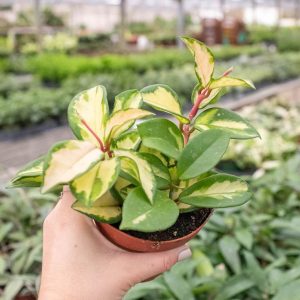
Hoya Krimson Queen
Ọ na - ahọrọ gburugburu ebe obibi na iru mmiri, yana ezigbo okpomọkụ nke 60-85 Celsius f (15-29 Celsius C). Iji nọgide na-enwe iru mmiri dị elu, ị nwere ike iji ihu mmiri ma ọ bụ ebe a na-adọta mmiri nke dịdebere n'akụkụ osisi ahụ. Na mgbakwunye, ịhọrọ ịdọcha mkpụrụ osisi na-amịpụta dị oke mkpa iji gbochie mmiri waterlogging na mgbọrọgwụ. A na-atụ aro ka iji ngwakọta emepụtara maka ọfụma ma ọ bụ orchids, ma ọ bụ mee ngwakọta nke gị nke peat, perlite, na ogbugbo ogbugbo.
Fertilizing, pruning, na ịgbasa ozi
N'oge na-eto eto (oge opupu ihe ubi na ọkọchị), ingmatilaiza krimson Queen otu ugboro n'ọnwa na-agbanye nri na-eto eto na ifuru. Kwachaa na-enyere aka ịkwado uto ghe okirikiri, wepụ ihe ma ọ bụ ndị mebiri emebi, ma na-agbasa osisi ọhụrụ site na stem cuttings. N'oge oyi, mgbe osisi ahụ na-abanye n'oge ya dị egwu, belata ugboro ole mmiri ma lelee ala mmiri tupu ihe ọkụkụ na-enweta izu ike na mgbake.
Hoya Krimson Queen, with its attractive leaves and flowers as well as its adaptability to various environments, is perfect as an indoor decorative plant for living rooms, bedrooms, and offices, or as a hanging plant on balconies and terraces. It can also thrive in gardens, greenhouses, and sunrooms, and is suitable for studies, workshops, restaurants, cafes, children’s rooms, hotels, resorts, medical facilities, and classrooms, adding a touch of greenery and providing a tranquil and comfortable atmosphere while educating children about plant care and the importance of nature.





